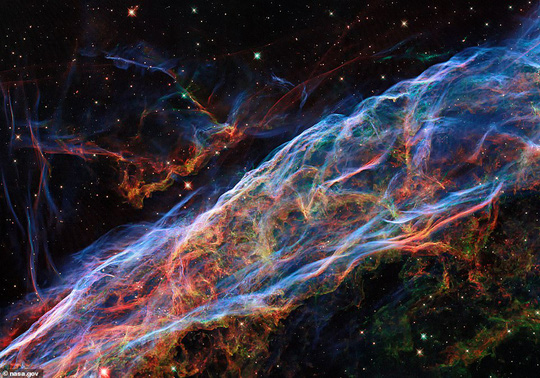According to NASA, this place located 2,100 light years from Earth was home to a star 20 times larger than the Sun. It exploded into a supernova 10,000 years ago, around the same time Earth had just completed its last ice age. Its ruin is the Swan Loop, with the visible part of the Veil nebula.
Images taken by NASA’s Hubble Space Telescope and ESA (European Space Agency) show a beautiful “spider’s web” woven from strands of ionized gas. This nebula is among the best known in the universe because the distance separating it from Earth is close enough that the astronomical lenses can be easily observed.
Using new processing techniques, ionized hydrogen and nitrogen are shown in red, while double ionized oxygen is shown in blue. This magnificent runoff continues to expand, reaching speeds of up to 932,000 mph in some directions.
“The rapid wave of ancient explosions passes through a wall of cooler, denser interstellar gas, emitting light. The nebula sits alongside a large, low-density air bubble. Blown into space by a dying star , that is, before it explodes ”- the Daily Mail quoted a comment from NASA.
Nebulae like these are seen as “windows of time,” helping us see the future of the Sun. Earth’s oldest mother star is expected to run out of energy within 5 billion years, after which it will erupt into a red giant before collapsing and continuing to collapse, with the ultimate destination being a supernova. – a brilliant death.


